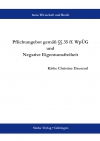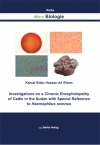Beschreibung
The terahertz (THz) range refers to frequencies between 0.1 and 10 THz and represents the spectral gap between the microwave and infrared region. Over the past few years, there has been a significant interest in employing THz technology in spectroscopy, imaging, and recently in short-range indoor communication systems. THz radiation can be generated by different schemes. Among them are the Far-Infrared (FIR) lasers which are preferred for their wide range of possible output frequencies and their high continuous-wave output power. In this thesis a FIR laser is presented and its working mechanism is described in detail. THz waves are able to penetrate most non-metallic objects and pose no health risk for human beings as they do not have any ionizing properties unlike for example X‑rays. This makes THz radiation ideal for imaging applications. An effective technique for imaging of small objects in thick samples is the so-called confocal microscopy. In this work we transfer the principle of optical confocal microscopy to the THz range using a FIR laser source. Detection of THz radiation represents one of the major hurdles which impede the commercial use of a practical and cost-effective THz system. Here some existing and new FIR laser detectors are presented and their working mechanism are discussed.








